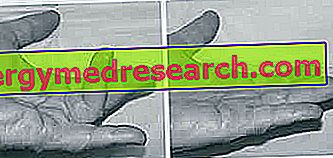
What is Mirvaso - brimonidine tartrate used for?
Mirvaso is a medicine that contains the active substance brimonidine tartrate . It is indicated for the treatment of facial erythema (redness of the skin of the face) in adults with rosacea, a long term pathological alteration of the skin, which often causes hot flushes and redness.
How is Mirvaso - brimonidine tartrate used?
Mirvaso is available as a gel (3 mg / g) and can only be obtained with a prescription. Mirvaso should only be applied to the skin of the face. A small amount of gel, the size of a small pea, should be applied in a thin layer to the skin of the forehead, chin, nose and cheeks. Before applying other creams or cosmetics, leave the affected areas to dry. For more information, see the package leaflet.
How does Mirvaso - brimonidine tartrate work?
Rosacea is an alteration that mainly affects the skin of the face. Among its symptoms are episodes of redness that have been related to the dilation of the small blood vessels that supply the skin of the face, with a consequent increase in the flow of blood in the affected area.
The active ingredient of Mirvaso, brimonidine tartrate, acts by binding and activating some receptors, called alpha2-adrenergic receptors, present on the cells of the blood vessels of the skin. In this way it causes a narrowing of the blood vessels, which reduces the flow of blood to the face, thus reducing the redness.
What benefit has Mirvaso - brimonidine tartrate shown during the studies?
Mirvaso was examined in two main studies involving a total of 553 patients with rosacea caused by moderate to severe rosacea. Both studies compared Mirvaso with placebo (a dummy gel) over four weeks of treatment. The main measure of effectiveness was the percentage of patients in whom a marked reduction in facial redness was observed after 3, 6, 9 and 12 hours after application on days 1, 15 and 29 from the beginning of therapy. In both studies, Mirvaso, applied once a day, was more effective than placebo in reducing facial redness in these patients.
- As part of the first study, a reduction in facial redness was observed 3 hours after the first application (day 1) in 16.3% (21 of 129) of patients treated with Mirvaso compared to 3.1% (4 of 131) treated with placebo. The effect lasted for 12 hours after application, although it started to fade after 6 hours. On day 29, 31.5% (40 of 127) of patients exhibited a reduction in facial redness 3 hours after applying with Mirvaso compared to a response of 10.9% (14 out of 128) recorded with the placebo.
- Within the second study, a reduction in facial redness was observed 3 hours after the first application (day 1) in 19.6% (29 out of 148 patients) of patients treated with Mirvaso compared to 0% ( none of the 145 patients) treated with placebo. Also in this case the positive effect lasted 12 hours after the application, even though it started to fade after 6 hours. On day 29, 25.4% (36 of 142) of patients exhibited a reduction in facial redness 3 hours after applying with Mirvaso compared to a response of 9.2% (13 of 142) recorded with the placebo.
What is the risk associated with Mirvaso - brimonidine tartrate?
The most common side effects of Mirvaso (which may affect more than 1 person 100), usually mild to moderate, are erythema (redness), itching, flushing and a burning sensation on the skin. For the full list of all side effects reported with Mirvaso, see the package leaflet. Mirvaso should not be used in children under the age of 2 years or in patients being treated with other medicines including monoamine oxidase inhibitors (MAOIs) or certain antidepressants. Treatment with Mirvaso is not indicated in children or adolescents aged between 2 and 18 years. For the full list of limitations, see the package leaflet.
Why has Mirvaso - brimonidine tartrate been approved?
The Agency's Committee for Medicinal Products for Human Use (CHMP) decided that Mirvaso's benefits are greater than its risks and recommended that it be approved for use in the EU. The CHMP concluded that Mirvaso improves facial redness in rosacea patients. As for safety, the CHMP acknowledged that the safety profile is acceptable since the reported adverse events are local disorders, ie affecting the skin, and are similar to those usually seen with other topical medicines used in the treatment of acne rosacea .
What measures are being taken to ensure the safe and effective use of Mirvaso - brimonidine tartrate?
A risk management plan has been developed to ensure that Mirvaso is used as safely as possible. Based on this plan, safety information has been included in the summary of product characteristics and the package leaflet for Mirvaso, including the appropriate precautions to be followed by healthcare professionals and patients. Further information is available in the summary of the risk management plan.
Other information about Mirvaso - brimonidina tartrate
On 21 February 2014, the European Commission issued a marketing authorization for Mirvaso, valid throughout the European Union. For more information about treatment with Mirvaso, read the package leaflet (also part of the EPAR) or contact your doctor or pharmacist. Last update of this summary: 02-2014.



